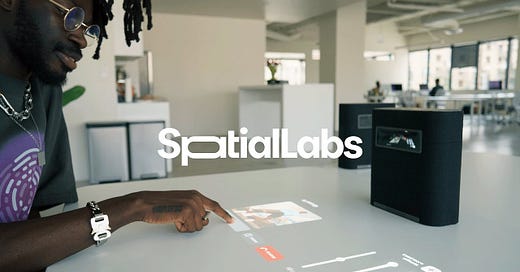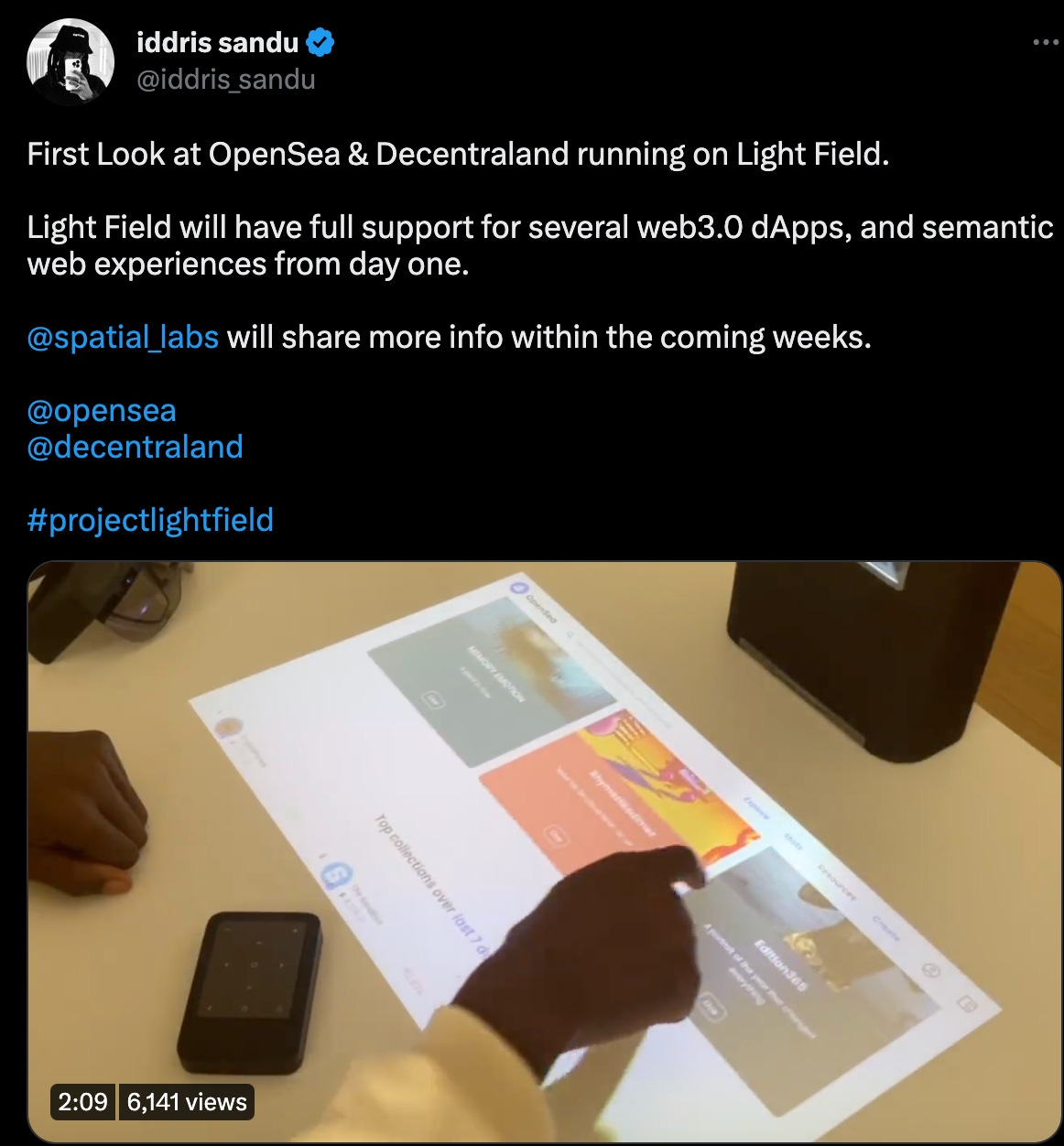Jay-Z backed Web3 Company is Moving at the Speed of Light
Iddris Sandu’s Spatial Labs is committed to bridge the gap between technology and culture through fresh and innovative design.
It is safe to say that 2023 is the year of Artificial Intelligence. We observed the outbreak of Generative Artificial Intelligence tools such as ChatGPT which not only greatly impacted the way we search online but also brought light to other tools to generate images like Midjourney or Stable Diffusion, just to name a few. Our team at STEELO has a mission to provide you with this valuable information in the tech space as they build up culture.
Speaking of culture, we covered the involvement of legendary rapper Jay-Z in the Web3 space through a Web3 infrastructure, fashion, and Metaverse company Spatial Labs founded by Ghanaian Tech genius, Iddris Sandu. The self-taught innovator is a Ghanaian-American Tech entrepreneur and founder of Spatial Labs, a Web3 infrastructure firm, founded in 2021. Since the beginning of Spatial Labs, Iddris has focused on creating a decentralized platform for fashion and culture. The 26-year-old Ghanaian tech entrepreneur has collaborated with major figures in Hip Hop including Kanye West, Pharrell Williams, and Jay-Z. He is known for his work in creating the Marathon Store, the first smart clothing store in collaboration with the Late rapper Nipsey Hussle while only 19. As a teenager, he also interned and consulted for Tech giants like Google, Facebook, Instagram, Twitter, Snapchat, and Uber. These unparalleled achievements can only cement how much of a genius he is. Later on, he collaborated with more big names and prestigious brands of different creative industries such as Virgil Abloh, Snoop Dogg, Prada, and adidas, just to name a few. His genius and aspirations don’t stop with tech only. He is a unicorn with a nerdy background willing to merge technology and culture together.
After creating their marketplace of clothes infused with technology called the LNQ marketplace, the Los Angeles-based company is getting involved in the music space, increasing its relevance in culture.
In this article, we will discuss how Iddris Sandu’s Spatial Labs is going to impact technology and culture with their long-anticipated Light Field Projector.
1. A Fresh and Unique Design
In a series of tweets and Instagram posts, Iddris Sandu founder of Spatial Labs has been previewing for a while an intriguing device which could be directly inspired by the holograms Tony Stark uses in the Iron Man films. A hologram is a three-dimensional image produced by multiple beams of light from a laser source. Hence the name of the device Light Field. It is a projector the size of a small gaming console that is capable of transforming any surface into an interactive touch display. You just press a button to turn it on and the projector will magically bring a screen up with an interface that can be controlled with your fingers and with a remote control. It is like displaying your phone or computer screen but on a bigger flat surface like a table.
Ultimately this futuristic device could redefine the way we use technology in plenty of ways since it takes advantage of any flat surface as opposed to the screens in our traditional phones and computers which are not resizable. With a few touches, you can increase the size of the touch surface to your liking and use your table as a giant iPad hence the name Spatial Labs. In fact, this fun way of interacting with a device is what makes the design so special and appealing.
2. Metaverse and Web3 Ready
Innovation is at the core of Spatial Labs’ DNA as they are aiming to make the Light Field Project an amazing Metaverse Technology. But what is the Metaverse? It refers to an immersive virtual world where users can interact in a computer-generated environment, play and work. Iddris Sandu previewed a use case that shows Light Field support for multiple Web3 apps. Web3 refers to the latest generation of the internet. It is a new technology that aims to decentralize data, giving users greater control and ownership over their digital identity. With Web3, users can own and control their data without relying on a middleman, in a secure way. Decentraland and OpenSea are both Web3 dApps or decentralized applications allowing users to create, experience, and monetize content. OpenSea is a well-known marketplace for selling and buying NFTs or non-fungible tokens which are unique digital assets representing ownership of a specific item or piece of content, such as artwork, music, or video.
Besides dApps, the Light Field will let you design and create a digital hologram of yourself. Through AR or Augmented Reality which is an interactive experience of a real-world environment where real objects are enhanced by computer-generated animations and information, the users will unlock new ways of interacting with their Light Field Projector avatar.
3. Music Production
In April 2023, Iddris Sandu’s Spatial Labs came back with a new preview entitled “The Future of Music”, introducing a new use case they have been working on. Music production. Iddris Sandu believes their new devices are going to “change the whole entire digital audio workstation flow for musicians to be able to make music on the go”. Spatial Labs’ promise here is to give users the ability to make music anywhere without having to carry around any heavy and clunky music material around with all the time.
In fact, the unicorn company built an app within the Light Field interface allowing you to use music production instruments and gears virtually. The device aims at replacing huge music production workstations since you find a digital equivalent of instruments in the app. The built-in speakers let you listen to instrumentals and vocals you can directly record on the tracks through the microphones.
Remember the Yeezy Stem Player? A handheld mixing device released under Kanye West’s Yeezy that allows users to remix finished songs in real time. A stem represents an audio channel within a song whether that be drums, instrumentals, bass, or vocals. The Stem Player lets you control these stems, add effects, and streamlines the process of music production. Thanks to its size, it can fit in a pocket and gets rid of all the big traditional music production workstations which require you to be stationary. In comparison, Light Field isn’t as portable but is small enough to let you make music on the go. It also gives the possibility to split stems and play with them which was the reason why people enjoyed the Stem Player.
It’s still too early to determine whether musicians will use this feature consistently as music production requires sophisticated and specific material. Besides, we still don’t know if the device has ports to plug cables or headphones.
Even though this holographic technology existed before, the refreshing design of the Light Field, its Augmented Reality features, its Web3 and Metaverse capabilities as well as its music production app are what make it appealing and unique. So far, Spatial Labs showcased just a few of the many use cases this device can achieve, the price and the release date still remain a mystery.
To conclude, it is safe to say Spatial Labs’ mission is to bring technology and culture together by creating products that are tapping into many different fields and different consumers. From Augmented Reality to Web3 to fashion and now music production, the company solidifies its intentions to impact and make technology cool and accessible to the masses, not just for the nerds and tech enthusiasts.











it is safe to say Spatial Labs’ mission is to bring technology and culture together by creating products that are tapping into many different fields and different consumers. From Augmented Reality to Web3 to fashion and now music production, the company solidifies its intentions to impact and make technology cool and accessible to the masses, not just for the nerds and tech enthusiasts.
🚀
I am the masses !!
Good read ❤️🔥